Pasadena Collection 的钱币相册
During World War II, the Mints at Denver and San Francisco augmented the Melbourne Mint's production of threepence, sixpence, shillings, and florin. "D" and "S" mintmarks were used to distinguish from Melbourne's work, which carried no mint mark. Mint: San Francisco. Mintage: 32,000,000.
After Belgium was overrun by Germany in 1940, the Belgian Congo proclaimed its loyalty to the Belgian government-in-exile in London for the duration of World War II. The US Mint coined these brass hexagonal two-franc pieces in 1943 only. Mint: Philadelphia. Mintage: 25,000,000. Unlike many older brass coins, this piece exhibits very nice, even coloration on both sides.
In an interesting emergency WWII issue for Belgium, the Philadelphia Mint coined these two-franc pieces from leftover zinc-coated steel 1943 U.S. cent planchets. Mint: Philadelphia. Mintage: 25,000,000.
The Philadelphia Mint manufactured coinage for Bolivia in only one year, 1942. Of the three denominations, the fifty centavos piece was coined in bronze, while the twenty and ten centavos pieces were coined in pure zinc. As pure zinc oxidizes quickly, nicely preserved twenty and ten centavos pieces command a premium. Mint: Philadelphia. Mintage: 10,000,000.
As part of the push to manufacture as many new nickel 10c pieces in the transition from silver coinage, the Royal Canadian Mint contracted with the US Mint at Philadelphia to augment dime production in 1968 and the first part of 1969. The Philadelphia coinage can be distinguished from Ottawa examples by the reeding style. The 1969 Philadelphia coins are currently thought of as trial strikes that were not officially released. Only 10-20 examples are known. These are distinguished by retaining the previous year's larger ship and date, while Ottawa-minted 1969 examples feature a reduced-size ship and date. Mint: Philadelphia. Combined 1968-69 Mintage: 85,170,000.
1934 China "Junk" Dollars were re-struck in 1949 at all three US mints (P,D,S) and are indistinguishable from the original 1934 dollars and from each other. Restrike Mintage: 30,000,000 (20,250,000 in Philadelphia, 3,200,000 in San Francisco, and 6,550,000 in Denver). This particular coin is one of my favorites in this set--it is not going to challenge for top pop, with 9,500+ in this MS62 grade with 22,000+ better, but it has just wonderful color, easily the best of the hundreds I have seen.
After coining 960,000 Colombian fifty centavos and 400,000 five centavos coins in 1902, the US Mint manufactured another 131+ million coins for Colombia between 1916 to 1946. Mint: Philadelphia. Mintage: 3,000,000.
Ex. Eldorado Collection of Colombian Coins. Mint: Philadelphia. Mintage: 960,000.
Mint: Philadelphia. Mintage: 630,000. A substantial part of the 2 centimos coinage of 1903 was overstruck and revalued as 5 centimos in 1942. This was done locally, not at a US Mint. Of the original mintage, 355,658 remain.
The US Mint manufactured over 131 million coins for Costa Rica from 1899 to 1970. Mint: Philadelphia. Mintage: 540,000.
Mint: Philadelphia. Total Mintage: 10,000,000 (BC*CR: 3,000,000; BCCR 7,000,000).
Mint: Philadelphia. Mintage: 250,000. This coin, along with the 1914 issue of the same type, is much rarer than its already-small mintage would indicate. Most were countermarked in 1923 to create one colon pieces, leaving very few pieces without the countermark.
Between 1941-1944, the US Mint manufactured twelve million coins for Curacao, the largest of the six islands comprising the Netherlands Antilles in the Caribbean off the coast of Venezuela. Mint: Philadelphia. Mint: 500,000.
The Philadelphia Mint coined four circulation issues for the Dominican Republic in 1897, and then regularly coined issues for the Caribbean nation from 1939 to 1960. After an almost two-decade hiatus, the Philadelphia Mint coined a few additional circulation issues and 1979-1981 proof sets, while the San Francisco Mint coined 1978 proof sets. The four 1897 issues (Peso, Half Peso, 20 Centavos and 10 Centavos) all have the mint mark "A" at the bottom of the reverse, signifying the Paris Mint, as this is where the dies were prepared. The coins, however, were ultimately produced from those dies at the Philadelphia Mint. Mintage: 1,454,824.
EE1936 = 1943-44. Mint: Philadelphia. Mintage: 20,000,000.
EE1936 = 1943-44. Mint: Philadelphia. Mintage: 109,000,000.
EE1936 = 1943-44. Mint: Philadelphia. Mintage: 161,000,000.
EE1936 = 1943-44. Mint: Philadelphia. Mintage: 30,000,000. Although the date was frozen as EE1936, these were issued in 1952-53. This is the second of two varieties of the EE1936 25c, with a scalloped shape. The first variety (KM-35) has a plain, circular edge.
EE1936 = 1943-44. The US Mint manufactured more than 375 million coins for Ethiopia between 1944-1963. All coins are dated EE1936. Mint: Philadelphia. Mintage: 50,434,000. There are two varieties of the EE1936 50c. The first is 80% silver with a mintage of 30,000,000, and the second is 70% silver with a mintage of 20,434,000. The two varieties are indistinguishable without a specific gravity test.
In advance of the liberation of France during World War II, the Allies decided to create "French" coins and paper money, which would be introduced by Allied soldiers during their progress through the German-occupied countryside. This coin circulated primarily in the south of France and in Algeria. Mint: Philadelphia. Mintage: 50,000,000.
The US Mint coined five kroner pieces in 1944, mainly for use of American forces in Greenland during World War II. Five kroner was equal to one U.S. dollar. Mint: Philadelphia. Mintage: 100,000.
Mint: Philadelphia. Mintage: 1,160,000.
When Guatemala transitioned from the Peso to the Quetzal in 1925-26, the government contracted with the US Mint to manufacture quarter, half, and one Quetzal silver pieces as well as five, ten and twenty Quetzal gold pieces. The US Mint was again contracted to produce brass and silver coins during World War II. All told, the US Mint manufactured almost eight million coins for Guatemala from 1925 to 1944. Mint: Philadelphia. Mintage: 10,000. An estimated 7,000+ of these 1925 One Quetzal pieces were melted in the 1927-1932 timeframe, leaving less than 3,000 examples extant for the type.
The US Mint manufactured over 90 million coins for Haiti between 1949 and 1979. Mint: Philadelphia. Mintage: 5,000,000.
CAC. The Republic of Hawaii, which had previously been the Kingdom of Hawaii, was annexed by the United States in 1898. Prior to all of that, in 1883, the Kingdom authorized dimes, quarters, half dollars, and dollars to be coined at the US Mint, all with the same specifications as their US equivalents. Mint: San Francisco. Mintage: 500,000.
This 1973 fifty centavos was issued as part of the United Nation's Food & Agriculture Organization's (FAO) campaign to promote growing more food. Mint: San Francisco. Mintage: 4,400,000.
The US Mint manufactured almost 116 million coins for Honduras between 1931 and 1973. Mint: Philadelphia. Mintage: 550,000.
Ex. D. Brent Pogue Collection. Mint: Philadelphia. Mintage: 150,000. The last regular circulation coinage for a foreign country produced at US Mints was in 1983 for Panama. Since then, the only foreign coin produced has been this Icelandic issue commemorating Leif Ericson, part of a two-coin pair jointly-issued with Iceland.
There had been some dispute about whether San Francisco coined 1921 (S) centimes. Although Krause and the US Mint report (based on fiscal year) splits the mintage between the 1920-21, "Foreign Coins Struck at United States Mints," (last published in 1965) stated that all are dated 1920. Actual Centime coins exist, however, dated 1921 and without the Paris "A" mintmark, indicating a San Francisco origin. Mint: San Francisco. Mintage: 15,000,000.
The US Mint manufactured over 135 million coins on behalf of French Indo-China (now Vietnam) from 1920 to 1941. Mint: San Francisco. Mintage: 4,000,000.
The US Mint at San Francisco produced three silver ten-lirot coins (total mintage: 91,000) on behalf of Israel from 1969-1971. Mint: San Francisco. Business Strike Mintage: 40,000. Proof Mintage: 20,000.
The Republic of South Korea, founded in 1948, did not initially have the economic stability required to issue coinage. This instability had abated somewhat a few years after the end of the Korean War, and the US Mint produced a total of 295 million coins, the first for the new republic, in the period between 1959-1961. KE4292 = 1959. Mint: Philadelphia. Mintage: 50,000,000.
The US Mint manufactured almost 57 million coins for Liberia between 1941 and 1975. Mint: Philadelphia. Mintage: 812,500.
This was the only foreign coin ever minted by the US Mint at New Orleans. Mintage: 5,434,699.
Mints: Philadelphia, Denver & San Francisco. Mintage: 60,000,850 (Philadelphia 25,000,000; Denver 18,000,000; San Francisco 17,000,850).
The US Mints manufactured more than 89 million coins for Mexico in just three years: 1906-07 and 1935. In 1949, the Mexican mint at Mexico City and the US Mint at San Francisco restruck 1898-Mo pesos for use as a "trade dollar" in China. They are distinguishable from the original 1898-Mo pesos only by the position of the "o" in the mintmark and by the number of denticles around the rim. There is some debate whether the San Francisco coins ever made it out of San Francisco, which may leave the indistinguishable Mexico City coins as the only "restrike" examples available today. Mint: San Francisco and Mexico City. Mintage: 10,250,000 [SF 2,000,000 and Mo 8,250,000].
The US Mint produced more than 562 million coins on behalf of the Netherlands during World War II. Mint: Philadelphia. Mintage: 120,000,000.
Mint: Philadelphia. Reported mintage: 92,000,000; almost all not released and presumed melted. See note on 1945-P 1G above.
Mint: Philadelphia. Reported mintage: 25,375,000. The mintage for this issue, as well as for the 1944-D & 1945-P Netherlands 10c and the 1945-P Netherlands 25c issues, is deceiving because it seems likely that most of the mintage was melted without being released. These four US-minted Netherlands issues are all quite rare today.
The US Mint produced more than 26 million coins for Nicaragua between 1917 and 1943. Mint: Philadelphia. Mintage: 720,000.
The US Mint regularly produced coins for Panama from 1904 to 1983. Total production in that span was just shy of 300 million coins. This coin, commonly called the "Panama Pill," has a diameter of only 10mm, the smallest coin ever produced by a US Mint. Mint: Philadelphia. Mintage: 400,000.
Mint: San Francisco. Mintage: 70,000 business strikes + 10,000 proofs.
Mint: Philadelphia. Mintage: 11,365 [1,365 proofs + 10,000 business strikes].
In 1947, the US Mint coined silver 50 centavos and one peso coins on behalf of the Philippines Republic in commemoration of General Douglas MacArthur and the US Armed Forces' liberation of the Philippines during World War II. The US mints would continue to assist the Philippines Republic by coining various denominations ranging from one sentimo to one piso from 1958-1976. Mint: San Francisco. Mintage: 100,000.
In 1906, a leper colony was established on the Philippines' Culion Island, located in the South China Sea. A separate, isolated coinage for the colony was devised to help contain the disease and was first minted in 1913 by a Frank & Co., a private mint in Manila. From 1920-1930, supplementary mintages were coined at the US Mint in Manila. Straight-graded and/or high-grade examples of all Culion coinage are extremely rare as coins were cleaned extensively, often with brush and acid, to prevent the spread of leprosy. Mintage: 4,000.
AH1356 = 1937. Mint: Philadelphia. Mintage: 21,500,000.
Mint: Philadelphia. Mintage: 10,850,000.
AH1356 = 1937. Mint: Philadelphia. Mintage: 7,150,000.
Two of the more interesting "coins" in this set are the one-pound and four-pound gold discs created to support economic stimulus efforts in Saudi Arabia in the late 1940s. As originally negotiated by the US State Department with the Kingdom of Saudi Arabia, the Saudis would be allowed to buy gold from the United States with dollars the kingdom had accumulated at just over the US official gold price of $35/oz. The Kingdom could then re-sell the gold on the open market at the international price of roughly $48/oz. The original idea of supplying the gold in hand-poured gold bars to exact specifications proved challenging, and the US Treasury Department suggested gold discs instead for future deliveries. The discs were designed and engraved by John Sinnock, Chief Engraver of the US Mint from 1925-47, who is better known today for his designs for the Roosevelt dime and Franklin half dollar. Mint: Philadelphia. Mintage: 121,364.
The US Mint produced four issues for Syria comprising 7.35 million pieces. Coins for Syria have dual A.D. and A.H. dates, both written in Arabic. Mint: Philadelphia. Mintage: 4,000,000.
For just two years, from 1918-1919, the US Mint supplemented domestic production of bronze, holed one satang pieces for the Kingdom of Thailand. Mint: Philadelphia. Mintage: 10,000,000.
























%202Fr%20PCGS%20MS64_album.jpg)

_10c_PCGS_MS64_(2)_album.jpg)
_20c_PCGS_MS64_album.jpg)
_50c_PCGS_MS66plusRD_album.jpg)
_10c_PCGS_MS66_album.jpg)
%20$1%20PCGS%20MS62_album.jpg)
_1c_PCGS_MS65_album.jpg)
_2c_PCGS_MS66_album.jpg)
_5c_PCGS_MS66_album.jpg)
_5c_PCGS_MS64_album.jpg)
_50c_PCGS_MS63_album.jpg)
_50c_PCGS_MS65_album.jpg)
_2c_PCGS_MS65_album.jpg)
_5c_PCGS_MS66_album.jpg)
_5c_PCGS_MS64RB_album.jpg)
_5c_BCCR_PCGS_MS67_album.jpg)
%205c%20PCGS%20MS67_album.jpg)
_5c_PCGS_MS65_album.jpg)
_10c_PCGS_MS65_album.jpg)
_10c_PCGS_MS64RB_album.jpg)
%2010c%20PCGS%20MS66_album.jpg)
_10c_PCGS_MS66_album.jpg)
_10c_PCGS_MS67_album.jpg)
_25c_PCGS_MS64_album.jpg)
_25c_PCGS_MS65_(2)_album.jpg)
_50c_PCGS_AU55_album.jpg)
_50c_PCGS_AU50_album.jpg)
_50c_PCGS_MS65_album.jpg)
_Colon_PCGS_MS63_album.jpg)
_Colon_PCGS_MS62_album.jpg)
%20Colon%20PCGS%20MS65_album.jpg)
_Colon_PCGS_MS66_album.jpg)
_2_Colones_PCGS_MS63_album.jpg)
_2_Colones_PCGS_MS64_album.jpg)
%202%20Colones%20PCGS%20MS65_album.jpg)
_2_Colones_PCGS_MS64_(1a)_album.jpg)
_5_Colones_PCGS_MS64_album.jpg)
_10_Colones_PCGS_MS63_album.jpg)
_20_Colones_PCGS_MS63_album.jpg)
%201c%20PCGS%20MS64_album.jpg)
%201c%20PCGS%20MS65_album.jpg)
%201c%20PCGS%20MS65_album.jpg)

_1c_PCGS_MS63_album.jpg)
_2c_PCGS_MS63_album.jpg)
_5c_PCGS_MS64_album.jpg)
_5c_PCGS_MS62_album.jpg)
_5c_PCGS_MS65_album.jpg)
_10c_PCGS_MS63_album.jpg)
_10c_PCGS_MS64_album.jpg)
_20c_PCGS_MS64_album.jpg)
_20c_PCGS_MS65_album.jpg)
_25c_PCGS_MS64_album.jpg)
_40c_PCGS_XF45_album.jpg)
_40c_PCGS_MS64_album.jpg)
_50c_PCGS_MS62_album.jpg)
_Peso_PCGS_MS64_album.jpg)
_Peso_PCGS_MS63_album.jpg)

_Gold_Peso_PCGS_MS64plus_album.jpg)
%202%20Pesos%20PCGS%20MS63_album.jpg)
_4_Pesos_PCGS_MS63_album.jpg)
_5_Pesos_PCGS_MS63_album.jpg)
_10_Pesos_PCGS_MS62_album.jpg)
_20_Pesos_PCGS_MS63_album.jpg)



%205c%20PCGS%20MS66_album.jpg)

_album.jpg)

_album.jpg)


_1c_PCGS_MS66RD_album.jpg)
%201c%20PCGS%20PR68DC_album.jpg)
_5c_PCGS_MS65_album.jpg)
_5c_PCGS_MS64_album.jpg)
%205c%20PCGS%20PR68DC_album.jpg)
_10c_PCGS_AU55_album.jpg)
_10c_PCGS_MS64_album.jpg)
%2010c%20PCGS%20PR68DC_album.jpg)
_20c_PCGS_AU50_album.jpg)
_25c_PCGS_MS64_album.jpg)
%2025c%20PCGS%20PR69DC_album.jpg)
_50c_PCGS_AU58_album.jpg)
%2050c%20PCGS%20MS64plus_album.jpg)
%2050c%20PCGS%20PR68DC_album.jpg)
_Peso_PCGS_AU55_album.jpg)
_Peso_PCGS_XF40_album.jpg)
_Peso_PCGS_MS64_album.jpg)
_Peso_PCGS_PR69DC_album.jpg)
%201c%20PCGS%20MS64RB_album.jpg)
_2.5c_PCGS_AU50_album.jpg)
_2.5c_PCGS_MS63_album.jpg)
_5c_PCGS_MS64_album.jpg)
_5c_PCGS_AU58_album.jpg)
_5c_PCGS_MS66_album.jpg)

_Decimo_PCGS_MS65_album.jpg)
_10c_PCGS_MS63_album.jpg)
_10c_PCGS_AU50_album.jpg)
_10c_PCGS_MS65plus_album.jpg)

_2_Decimos_PCGS_MS66_album.jpg)
_20c_PCGS_MS66_album.jpg)
%2020c%20PCGS%20MS65_album.jpg)
_50c_PCGS_MS64_album.jpg)
_Sucre_PCGS_MS66_album.jpg)
_Sucre_PCGS_MS651_album.jpg)
_2S_PCGS_MS63_album.jpg)
%201c%20PCGS%20MS64_album.jpg)
_1c_PCGS_MS63_album.jpg)
_1c_PCGS_MS66RD_album.jpg)
_3c_PCGS_MS64_album.jpg)
_5c_PCGS_MS65_album.jpg)
_5c_PCGS_MS63_album.jpg)
_5c_PCGS_MS66_album.jpg)
%205c%20PCGS%20MS65_album.jpg)
_10c_PCGS_MS65plus_album.jpg)
_10c_PCGS_MS66_album.jpg)
_10c_PCGS_MS66_album.jpg)
_25c_PCGS_AU58_album.jpg)
_25c_PCGS_MS66_album.jpg)
%2025c%20PCGS%20MS65_album.jpg)
%2050c%20PCGS%20MS64_album.jpg)
_Peso_PCGS_MS64_album.jpg)
_1c_PCGS_MS65RD_album.jpg)
_5c_PCGS_MS64RD_album.jpg)
%2010c%20PCGS%20MS65RD_album.jpg)
_25c_Rounded_Edge_PCGS_MS64RD_album.jpg)
%2025c%20Scalloped%20Edge%20PCGS%20MS64_album.jpg)






_2_Fr_PCGS_MS64_album.jpg)
_5Kr_PCGS_MS64_album.jpg)
%201c%20PCGS%20MS66_album.jpg)
%202c%20PCGS%20MS64_album.jpg)
%205c%20PCGS%20MS66_album.jpg)
_10c_PCGS_MS66_album.jpg)
_25c_PCGS_MS64_album.jpg)
_25c_PCGS_MS66_album.jpg)
%2050c%20PCGS%20XF45_album.jpg)
_1Q_PCGS_AU53_album.jpg)
_5Q_PCGS_MS64plus_album.jpg)
_10Q_PCGS_MS63plus_album.jpg)
_20Q_PCGS_MS63_album.jpg)
%205c%20PCGS%20MS63_album.jpg)
_5c_PCGS_MS65_album.jpg)
%205c%20PCGS%20MS64_album.jpg)
%205c%20PCGS%20MS65_album.jpg)
_10c_PCGS_MS65_album.jpg)
_10c_PCGS_MS66_album.jpg)
%2010c%20PCGS%20MS65_album.jpg)
%2010c%20PCGS%20MS65_album.jpg)
%2020c%20PCGS%20MS64_album.jpg)
_20c_PCGS_MS65_album.jpg)
%2020c%20PCGS%20MS64_album.jpg)
%2050c%20PCGS%20MS65_album.jpg)
_50c_PCGS_MS64_album.jpg)
_American_Bicentennial_G25_PCGS_PR68DC1_album.jpg)
%20Olympics%2050G%20PCGS%20PR66CAM_album.jpg)
_Holy_Year_50G_PCGS_PR67DC_album.jpg)
_10c_PCGS_AU58_Gold_CAC_album.jpg)
_25c_PCGS_MS64_CAC_album.jpg)
_50c_PCGS_AU55_CAC_album.jpg)
_$1_PCGS_AU55_CAC_album.jpg)
_1c_PCGS_MS67RB_album.jpg)
_1c_PCGS_MS67RD_album.jpg)
_2c_PCGS_MS66RD_album.jpg)
%205c%20PCGS%20MS66_album.jpg)
%2010c%20PCGS%20MS66_album.jpg)
_20c_PCGS_MS66_album.jpg)
_50c_PCGS_MS65_album.jpg)
%2050c%20PCGS%20MS64_album.jpg)
_Lempira_PCGS_MS66_(2)_album.jpg)

_1c_PCGS_MS64BN_album.jpg)
_10c_PCGS_AU55_album.jpg)
_10c_PCGS_MS65_album.jpg)

_20c_PCGS_MS62_album.jpg)

_Piastre_PCGS_AU58_album.jpg)
_10_Lirot_PCGS_PR69CA_album.jpg)
_10_Lirot_PCGS_PR66DC_album.jpg)
_10_Lirot_PCGS_PR67DC_album.jpg)
_10_Hwan_PCGS_MS64RD_album.jpg)
_50_Hwan_PCGS_MS65_album.jpg)
%20100%20Hwan%20PCGS%20MS64_album.jpg)
_0.5c_PCGS_MS66_album.jpg)
_1c_PCGS_MS64_album.jpg)

_2c_PCGS_MS65_album.jpg)



_25c_PCGS_MS65_album.jpg)
_25c_PCGS_PR68DC_album.jpg)
_50c_PCGS_MS64_album.jpg)
_50c_PCGS_PR68CA_album.jpg)
_$1_PCGS_MS63_album.jpg)

_$5_PCGS_PR68DC_album.jpg)
_20c_Curved_7_PCGS_MS65_album.jpg)
_50c_Open_9_PCGS_MS63_album.jpg)
%2050c%20PCGS%20MS65_album.jpg)
_Peso_Restrike_PCGS_MS66_album.jpg)
%205P_album.jpg)
%2010P%20PCGS%20MS62_album.jpg)
_(S)_1p_PCGS_PR68CA_album.jpg)
%20(S)%201p%20PCGS%20PR68CAM_album.jpg)
_(S)_2p_PCGS_PR67_album.jpg)
%20(S)%202p%20PCGS%20PR67CAM_album.jpg)
_(S)_5p_PCGS_PR68_album.jpg)
%20(S)%205p%20PCGS%20PR69CAM_album.jpg)
_(S)_10p_PCGS_PR66_album.jpg)
%20(S)%2010p%20PCGS%20PR67CAM_album.jpg)
_(S)_25p_PCGS_PR691_album.jpg)
%20(S)%2025p%20PCGS%20PR68CA_album.jpg)
_(S)_50p_PCGS_PR681_album.jpg)
%20(S)%2050p%20PCGS%20PR68CA_album.jpg)
_(S)_Rupee_PCGS_PR681_album.jpg)
%20(S)%20Rupee%20PCGS%20PR69_album.jpg)











_1c_PCGS_MS65RD_(1)_album.jpg)
_1c_PCGS_MS65_album.jpg)
_5c_PCGS_MS65_album.jpg)
_5c_PCGS_MS65_album.jpg)
_10c_PCGS_MS64_album.jpg)
_10c_PCGS_MS63_album.jpg)
_25c_PCGS_AU58_album.jpg)
_25c_PCGS_MS65_album.jpg)
%2050c%20PCGS%20AU55_album.jpg)
%200.5c%20PCGS%20MS64_album.jpg)
_1c_PCGS_MS65RD_album.jpg)
%201c%20PCGS%20PR68CA_album.jpg)
_1c_Zinc_PCGS_MS65RD_album.jpg)
_1.25c_PCGS_MS66RD_album.jpg)
_2.5c_PCGS_MS66_album.jpg)
_2.5c_PCGS_MS64_album.jpg)
_2.5c_PCGS_MS62_album.jpg)
%202.5c%20PCGS%20MS66_album.jpg)
%202.5c%20PCGS%20PR66_album.jpg)
_5c_PCGS_MS62_album.jpg)
_5c_PCGS_MS63_album.jpg)
_5c_PCGS_PR68DC_album.jpg)
_10c_PCGS_XF45_album.jpg)
_10c_PCGS_MS64_album.jpg)
_10c_PCGS_PR68CA_album.jpg)
%2025c%20PCGS%20AU53_album.jpg)
_25c_PCGS_MS64_album.jpg)
%2025c%20PCGS%20PR69CA_album.jpg)
_50c_PCGS_AU55_album.jpg)
%20Half%20Balboa%20PCGS%20MS64_album.jpg)
%2050c%20PCGS%20PR68DC%203_album.jpg)
%2050c%20PCGS%20PR68DC_album.jpg)
_Balboa_PCGS_MS66_album.jpg)
%20Balboa%20PCGS%20PR68CA_album.jpg)
_5_Balboas_PCGS_PR68CA_2_album.jpg)
_1c_PCGS_MS64BN_album.jpg)
_2c_PCGS_MS66BN_album.jpg)
_5c_PCGS_MS65_album.jpg)
_5c_PCGS_MS65_album.jpg)
_10c_PCGS_MS65_album.jpg)

_20c_PCGS_MS64_album.jpg)
%2020c%20PCGS%20MS63_album.jpg)
_Half_Sol_PCGS_MS65_album.jpg)
_Half_Sol_PCGS_MS65_album.jpg)
_Sol_Small_Letters_PCGS_MS63_album.jpg)
_Sol_PCGS_MS63_album.jpg)
_Sol_PCGS_MS64_album.jpg)
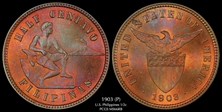
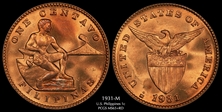
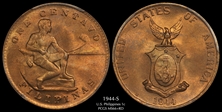

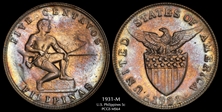
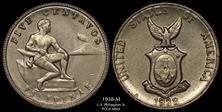
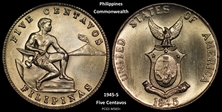

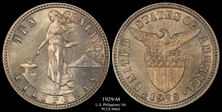
_album.jpg)
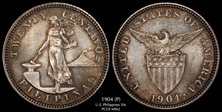
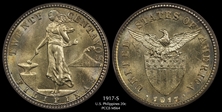
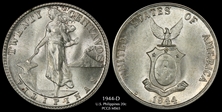
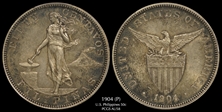
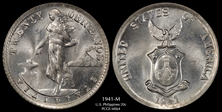
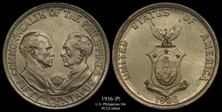
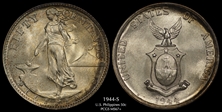
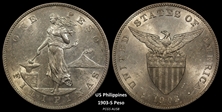
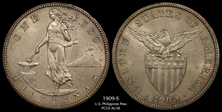
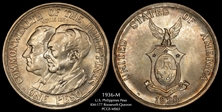
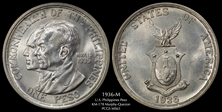
_1c_PCGS_MS66RD_album.jpg)
_1s_PCGS_PR66CA_album.jpg)
_1s_PCGS_MS65_album.jpg)
_5c_PCGS_MS66_album.jpg)
_5s_PCGS_MS66_album.jpg)
_5s_PCGS_MS64_album.jpg)
_10c_PCGS_MS66_album.jpg)
_10s_PCGS_PR67_album.jpg)
_10s_PCGS_MS67_album.jpg)
_25c_PCGS_MS65_album.jpg)
_25s_PCGS_MS66_album.jpg)
_25s_PCGS_MS66_album.jpg)

%2050c%20PCGS%20MS66_album.jpg)
_Half_Peso_PCGS_MS65_album.jpg)
_50s_PCGS_PR65_album.jpg)

_Peso_PCGS_MS65_album.jpg)
_Peso_PCGS_MS65PL_album.jpg)
_Piso_PCGS_MS65PL_album.jpg)
%20Piso%20PCGS%20MS66_album.jpg)
_Piso_PCGS_MS65_album.jpg)
_1c_PCGS_VF20_album.jpg)
_5c_PCGS_XF40_album.jpg)
_10c_PCGS_F12_album.jpg)
_10c_PCGS_VF35_album.jpg)
_20c_PCGS_F12_album.jpg)
_20c_PCGS_XF40_album.jpg)
_Peso_PCGS_VF35_album.jpg)
_Peso_Straight_Wings_PCGS_XF40_album.jpg)
_Peso_PCGS_XF40_album.jpg)
_2_Zlote_PCGS_XF45_album.jpg)
%20Quarter%20Ghirsh%20PCGS%20MS65_album.jpg)
_Half_Ghirsh_PCGS_MS66_album.jpg)
%20Ghirsh%20PCGS%20MS64_album.jpg)
_Quarter_Riyal_PCGS_MS67_album.jpg)
_Half_Riyal_PCGS_MS66_album.jpg)
_Riyal_PCGS_MS66_album.jpg)



%2025P%20PCGS%20MS65_album.jpg)
_50P_PCGS_MS65_album.jpg)
%20Half%20Pound%20PCGS%20MS66_album.jpg)
%20Pound%20PCGS%20MS64_album.jpg)
(P)_Yuan_PCGS_MS66_album.jpg)
(P)_Five_Yuan_PCGS_MS62_album.jpg)
_Satang_PCGS_MS66RD_album.jpg)
_1c_PCGS_AU58_album.jpg)
_2.5c_PCGS_XF40_album.jpg)
_5c_PCGS_MS64plus_album.jpg)
_5c_PCGS_MS63_album.jpg)
_5c_PCGS_MS66plus_album.jpg)
%205c%20PCGS%20MS65_album.jpg)
_12.5c_PCGS_MS64_album.jpg)
_12.5c_PCGS_MS63_album.jpg)
_12.5c_PCGS_MS65_album.jpg)
_12.5c_PCGS_MS65_album.jpg)
%2025c%20PCGS%20MS66_album.jpg)
_25c_PCGS_MS65_album.jpg)
_50c_PCGS_MS63_album.jpg)
_Accent_in_Bolivar_50c_PCGS_MS65_album.jpg)
%2050c%20PCGS%20MS64_album.jpg)
_1B_PCGS_MS63_album.jpg)
_1B_PCGS_MS65plus_album.jpg)
_1B_PCGS_MS64_(2)_album.jpg)
_2B_PCGS_MS64_album.jpg)
_2B_PCGS_MS64_album.jpg)
_10B_PCGS_MS66_album.jpg)